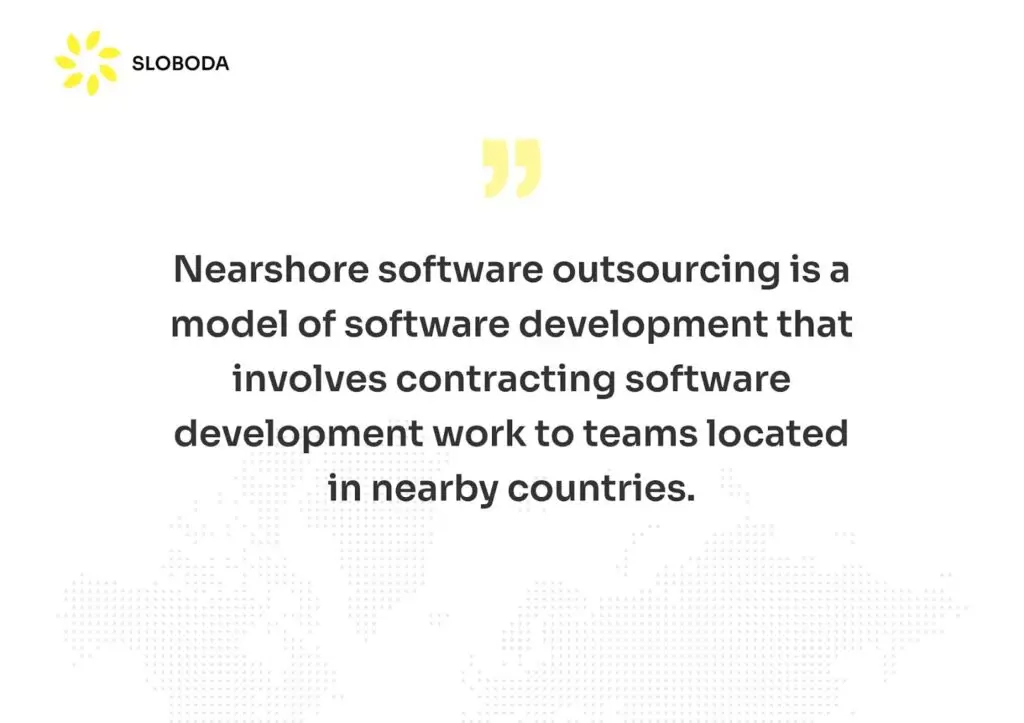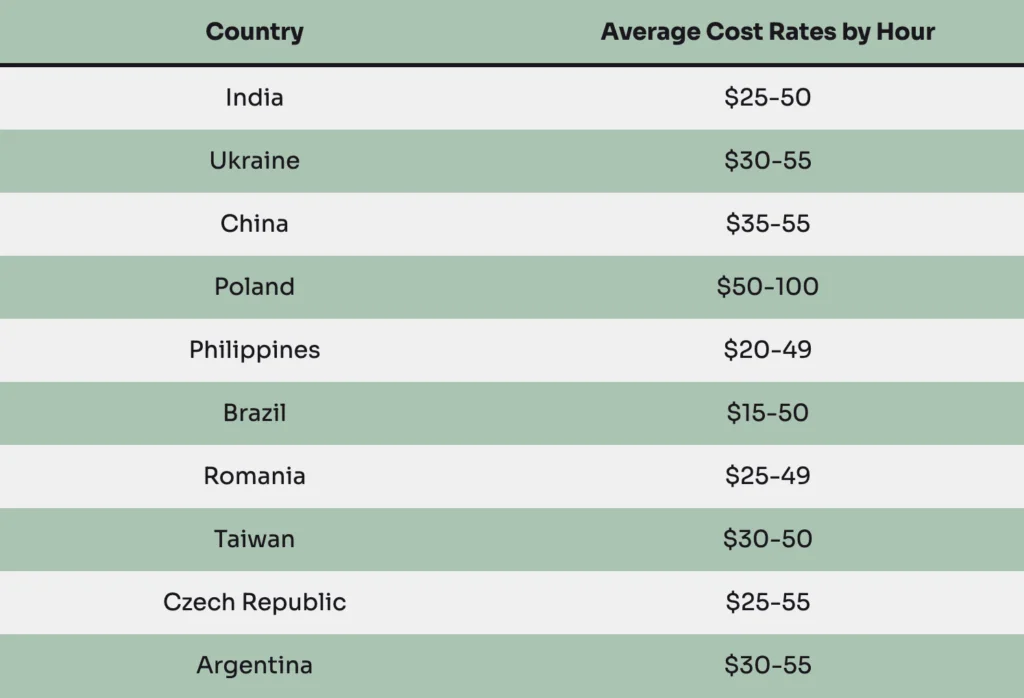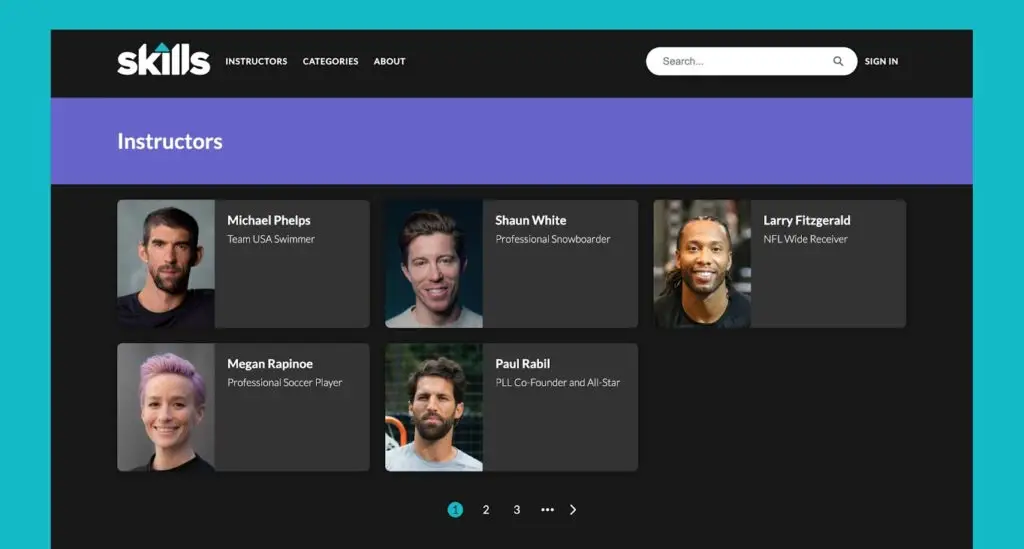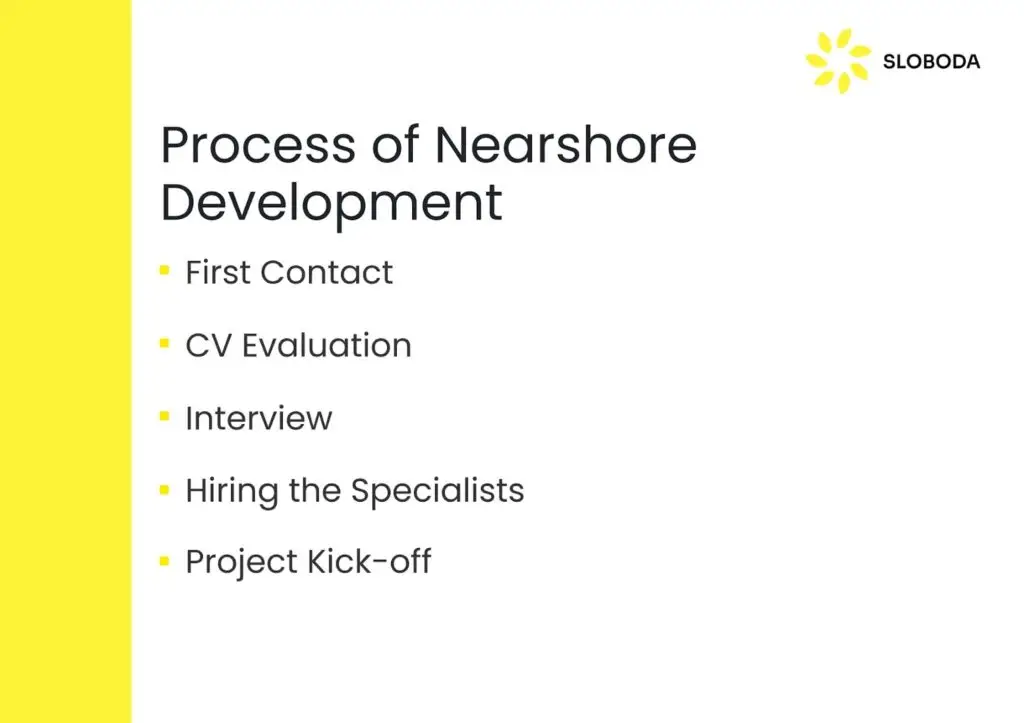Nearshore software outsourcing can be a smart decision for small businesses that aren’t ready to explore different time zones and complications connected to building joined teams for work. Nearshore outsourcing is slightly different from offshore. But, the very idea of ordering services is beneficial no matter the country.
Over 59% of companies prefer to use nearshore outsourcing as a cost-cutting tool. There is, of course, more to nearshore work outsourcing than cost cutting. The service brings many pros to the table, and in this article, we aim to find out if not most of them.
Understanding Nearshore Software Development Outsourcing
Before we start exploring the benefits and drawbacks of nearshore software development outsourcing, let’s make a quick pause to define the concept itself.
Nearshore Software Outsourcing Definition and Key Concepts
Nearshore software outsourcing is a software development model that involves contracting software development work to teams located nearby.


Typically those countries are the same continent and/or share a time zone. This differs from traditional offshore outsourcing, which utilizes work teams in distant locations, often leading to communication and time zone challenges.
These are the most common traits of nearshore development outsourcing:
- Geographic Proximity: Nearshore teams work close to the clients companies. This brings advantages such as easier travel and potentially overlapping business hours.
- Reduced Communication Barriers: Culture can be quite alike in nearing countries. It might contribute to smoother collaboration and clearer project understanding.
- Improved Time Zone Alignment: Same time zones minimize communication delays, building more efficient collaboration during core working hours.
Nearshore vs. Onshore vs. Offshore: A Comparative Overview
Naturally, when talking about outsourcing, we should mention onshore and offshore in the close tie with nearshore. For the most effective comparison, we’ve conjured a table. It will help you see the differences between cooperation models.
| Feature | Nearshore | Onshore | Offshore |
| Location | Nearby countries | Same country or region | Distant regions |
| Cost | Potentially lower than onshore, but higher than offshore | Highest cost | Lowest cost |
| Communication | Easier due to cultural and language similarities | Easiest, no language or cultural barriers | Most difficult, potential for misunderstandings |
| Time Zone | Same time zones, facilitates real-time collaboration | Same time zone, seamless communication | Significant time zone differences, communication gaps |
| Travel | Easier and less expensive due to geographic proximity | No travel required | Difficult and expensive travel |
| Project Management | Less complex due to easier communication and time zone overlap | Straightforward, established communication channels | Most complex, requires strong project management skills |
| Cultural Similarities | More likely to share work styles and expectations | Potentially shared culture and work environment | Significant cultural differences may require adaptation |
| Talent Pool | Access to skilled professionals, but may be smaller than onshore | Big pool of potential talent | Largest pool of potential talent |
| Intellectual Property (IP) Security | Moderate risk, potentially easier legal recourse | Lowest risk, established legal systems | Highest risk, complex legal environments |
| Client Control | High level of control | Highest level of control | Least control |
Now, you can check out which format works best for you and, as soon as you have the understanding, we can go on exploring the nearshore outsourcing. Next – the benefits this format brings to different companies.
Benefits of Nearshore Software Development Outsourcing
The advantages of nearshore software development are visible to the companies that choose to collaborate with agencies close to home. Let’s focus on the most prevalent advantages of this format.


Cost-Effectiveness and Efficiency
The allure of cost savings is a major driver for many tech companies considering outsourcing. Nearshore development provides a significant advantage in this regard. Compared to onshore development, nearshore teams can deliver projects at a cost reduction.
The less expensive software development is possible due to factors as lower developer salaries and taxes in nearshore places compared to more developed regions. However, unlike offshore outsourcing where lower costs often come with communication and efficiency challenges, nearshore locations frequently have a lot of engineers available and established infrastructure. This translates to a highly skilled workforce that can deliver projects efficiently, minimizing delays and disruptions often associated with offshore development.
Access to Highly Skilled Experts
The tech talent pool available to your project is crucial for its success. Nearshore software development expands horizons beyond the limitations of the market in which companies operate.
It’s beneficial for businesses that require specialized skills or extensive experience that may be scarce in your immediate region. By partnering with a nearshore development company, you gain access to a wider range of qualified professionals, allowing you to find the perfect fit for your specific needs.
Cultural and Language Alignment
Communication is key to a successful software development project. The geographical proximity inherent in nearshore outsourcing often translates to cultural and linguistic similarities between your team and the development team. This shared background fosters smoother communication, reduces misunderstandings, and allows for a deeper understanding of project goals and expectations.
Cultural nuances that can sometimes lead to misinterpretations in offshore development are less with a nearshore approach. This fosters a more collaborative environment where tech ideas can be exchanged freely and effectively.
Looking for nearshore developers?
Contact Us
Geographical Proximity and Time Zone Advantages
Time zone differences can be a significant hurdle in software development projects.
Nearshore development teams are located in countries with similar time zones to your own. This facilitates immediate collaboration and faster turnaround times. Imagine needing a quick clarification or a minor code adjustment.
With a nearshore team, you can reach them during regular working hours, minimizing delays and keeping the project moving forward efficiently. Additionally, the geographic closeness allows for easier travel and in-person meetings, significantly reducing travel costs. This ability to connect face-to-face can be invaluable for building stronger team relationships, fostering trust, and ensuring everyone are on the same page.
Top-10 Best Countries for Outsourcing
With so many countries vying for your attention, choosing the right tech partner can be challenging. It also, of course, depends on where your company is located. For some, Europe will be nearshore, and for others – it would be more sensible to search for engineers in Latin America. This is why we included many different countries in our list. Hopefully, it will help you to compare and optimize software development costs effectively to find the best partner or team of engineers in no time.


So, without further ado, the best countries for outsourcing:
- Ukraine: Ukraine has a well-established IT sector with a skilled and experienced workforce. Despite the war and geopolitical challenges, this country upscales its outsourcing capabilities. The revenue grows with each new year, and in 2023 they just reached an all-time high uplifting the outsourcing revenue by 136%.
- Poland: Companies based in Poland offer a tech-savvy workforce with expertise in software development and project management.
- Romania: Romania is a part of Eastern Europe as well, hence it also offers great cost for proficient software development services for different kinds of businesses.
- India: A juggernaut in the IT sector, India has a large talent pool of skilled programmers and engineers at efficient rates.
- Brazil: If you need to develop software solutions in Latin America, engineers based in Brazil with effective costs and a wide variety of companies available will be your choice.
- Mexico: The best option for those based in the US in terms of nearshore. Mexico has lower rates for development and is located close enough.
- Vietnam: A rapidly developing IT hub, Vietnam provides a tech-savvy workforce with competitive rates.
- China: For this country, the cost-to-quality ratio is probably the most beneficial. However, for those based elsewhere navigating cultural and legal differences with China can be complex.
- The Philippines: Renowned for its strong customer service skills and English proficiency, the Philippines is a leader in business process outsourcing (BPO).
- Malaysia: This Southeast Asian nation is a hub for IT and BPO services, providing a multilingual workforce and strong government support for the industry.
Challenges and Considerations in Nearshore Outsourcing
Nearshore software solutions development provides numerous benefits. It’s important to be aware of potential challenges and drawbacks it might have before diving in. From culture to customs, everything could be different.
Potential Risks and How to Mitigate Them
- Communication and Cultural Differences: Nearshore partners typically share greater cultural similarities compared to offshore teams, but differences can still arise. To mitigate this, our advice would be to invest in clear communication protocols, establish regular meetings, and encourage open dialogue. Building strong relationships through video calls and even in-person visits can further bridge the gap.
- Talent Pool Availability: The talent pool in your chosen nearshore location may not be as vast as in some onshore markets. Carefully research potential partners and ensure they have a proven track record of delivering projects with the skillsets you require. We advise you to start with a technology first. Once you know what stack you’re looking for, it will be easier to find people you need on board.
- Intellectual Property (IP) Security: Data security is paramount. Conduct thorough due diligence on your nearshore partner’s security practices. Ensure they have robust data protection measures in place and consider signing non-disclosure agreements (NDAs). Our advice is to first talk to the company you’re considering. Go through all the details with them, and if everything works for you – it’s time to form the contract.
- Project Management Complexity: Nearshore projects have high level of communication, yet still some areas of project management should be considered carefully. We advise you to define project requirements, establish milestones with deliverables, and utilize effective project management tools to maintain oversight.
- Legal and Regulatory Environment: Familiarize yourself with the legal and regulatory environment of your chosen nearshore location. This includes areas such as data privacy, intellectual property rights, and dispute resolution mechanisms. Our advice is that sometimes just a technical team is not enough. So back yourself up with some good legislation firm.
Nearshore Services Quality Evaluation
Evaluating the quality of potential nearshore partners is crucial for project success. Consider these key steps:
- Looking for case studies and examples of projects similar to yours.
- Trying to seek out feedback from past clients to gauge their high-level experience.
- Hiring experts who have the skillsets and experience that align with your project needs.
- Scheduling calls with the team to assess their soft skills and cultural fit.
- Inquiring about their data security practices and ensure they meet your standards.
How to Choose the Right Nearshore Software Development Team
Nearshore software development offers a compelling middle ground between scary offshore with people from entirely different culture and often expensive onshore. Companies in the nearby countries, often within the same continent or sharing a similar time zone, can help achieve a balance between cost-effectiveness and efficient collaboration.
Technical Expertise and Experience
Before embarking on your search, try to clearly define the technical requirements of your project. This includes the specific technologies needed, the development methodologies employed, and the level of expertise required in each area.
Then, your next step is to carefully examine your potential development partner’s portfolios, looking for case studies and projects similar to yours. Do this to gain valuable insights into their capabilities and experience with relevant technologies.
However, remember to not settle for resumes alone. Schedule technical interviews with the development team to assess their skillsets and problem-solving abilities. Let them see real-world scenarios or technical challenges relevant to your project and evaluate their approach and thought process.
Past client experiences can also be a goldmine of information. You can look at the engagement rates or overall project success according to the set milestones. Reach out for references from past clients in similar industries who can provide feedback on the team’s technical expertise and ability to deliver projects successfully.
Importance of Communication Skills
By prioritizing strong communication skills, you lay the foundation for a collaborative and productive working relationship with your nearshore development team.
So, try to schedule calls with the team to assess their English proficiency, communication clarity, and responsiveness. Look for clear and concise communication, with the ability to explain technical concepts in an understandable manner.
The team should be adept at active listening. This means they can not only hear your instructions but also ask clarifying questions to ensure a complete understanding of your project requirements. Also, pay attention to their culture and be willing to learn as well.
Legal and Operational Framework Considerations
For legal considerations, start with the research of the legal environment of the nearshore location. It’s important to understand data privacy laws, intellectual property rights, and dispute resolution mechanisms.
Due diligence on the nearshore partner’s security practices can also be very helpful. It will aid you to ensure they have robust data protection measures in place and consider signing non-disclosure agreements (NDAs) to safeguard your intellectual property. A clear and concise contract protects both parties. Ensure the contract clearly outlines:
- the project scope
- deliverables
- timelines
- payment terms
- and intellectual property ownership.
Legal counsel can be helpful if you seek to review the contract thoroughly before signing.
Finally, discuss communication protocols, reporting structures, and how they will handle project milestones and deliverables.
Why Choose Sloboda as Your Nearshore Software Development Partner?
Our team keeps it together with the process and the deliverables in all of our projects. We know how to prioritize processes and features, this is why we’ve completed successfully so many MVPs that later grew into full-scale products.
Our launch time is only 3 to 4 months and our proficiency with technologies such as Ruby on Rails and Python allows us to deliver better results. We’ve built and scaled over 200 projects and 10+ marketplaces, along with helping our products raise $100M in funding.
Sloboda Studio has benefits in terms of delivery and development, and there are great cases we’ve completed to connotate that further.
Sloboda’s Successful Nearshore Software Development Project Examples
Veeqo
We have scaled an omnichannel retail platform for various merchants that allows users to manage orders and keep track of the inventory. Overall it raised over $9.4M in funding. The outstanding fact about this platform is that it is possible to ship over 100 orders in a single click. And in the end, this platform was acquired by Amazon.


Veeqo
The Skills
Our team worked on an educational platform that produces and distributes online lessons from the world’s top athletes as Michael Phelps and Saun White. The platform is able to collect payments through a subscription model of monetization.


The Skills
Setting Up Nearshore Software Development Processes
Nearshore software development offers a compelling option for companies seeking to balance cost-effectiveness with efficient collaboration. But how do you translate this potential into a successful project reality? Let’s figure this out.
Steps to Start with Nearshore Outsourcing
Every process has steps and nearshore outsourcing is the same. Depending on each company, the process might differ. For Sloboda Studio, it goes like this:


- First call – we contact our client after you’ve left your email or phone number, and have a short screening of what you are looking for.
- Evaluation – our team carefully assesses your needs and figures out the best possible team for you. It only takes us up to a few weeks to match you up with specialists.
- Interview – you have interviews with potential candidates.
- Hiring and kickstarting the product.
Tools and Technologies for Seamless Collaboration
Don’t underestimate the power of technology in bridging the physical gap and fostering seamless collaboration with your nearshore software development team. A carefully chosen suite of tools can streamline collaboration, keep everyone aligned, and ensure a smooth engineering process.
- Tools for product management should empower you to efficiently assign tasks, track progress in real-time, and facilitate clear communication. We use Asana, Trello, and Jira for different teams.
- Version control systems can help you with code stability, tracking changes, and allowing everyone to work on the latest version. For this, we use Git.
- Communication is drastically important to build a sense of teamwork. We use video conferencing for this, adhering to tools such as Zoom and Google Meet.
Lessons Learned and Key Takeaways
So, wrapping up, nearshore software engineering presents a compelling alternative to traditional offshore outsourcing. By partnering with teams in nearby countries, businesses can achieve a balance between cost savings and efficient collaboration.
Geographical proximity fosters smoother communication, reduces time zone challenges, and allows for easier travel and in-person interaction. However, navigating potential hurdles like cultural differences, talent pool limitations, and intellectual property security is also very important for success.
So, if nearshore is your jam then try to do what you can to find the right nearshore partner and follow the best practices for project management. We’d also advise you to leverage the many advantages of nearshore development with interviewing and accessing skills.